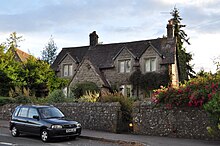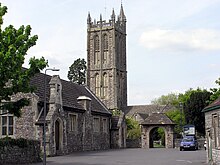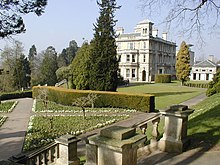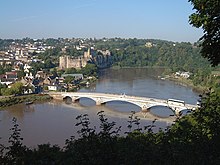


Holliday Grainger
Holliday Clark Grainger (born 27 March 1988), also credited as Holly Grainger, is an English screen and stage actress. Some of her prominent roles are Kate Beckett in the BAFTA award-winning children’s series Roger and the Rottentrolls, Lucrezia Borgia in the Showtime series The Borgias, Robin Ellacott in the Strike series, DI/DCI Rachel Carey in the Peacock/BBC One crime drama The Capture, and Estella in Mike Newell’s 2012 film adaptation of Charles Dickens’ 1861 novel Great Expectations.
Early life
Grainger was born in Didsbury, Manchester. Her maternal grandfather was Italian.[1][2] Her first experience of acting was at the age of five when she was scouted for a BBC TV series. She appeared in many TV shows and independent films as a child actor.[2]
Grainger attended Parrs Wood High School from 1999 to 2006,[3] and in 2007 began study for a degree in English literature at the University of Leeds. However, she eventually opted for the Open University


Career
Grainger’s first acting role was at five years old in the BBC comedy drama series All Quiet on the Preston Front.[4] Roles followed in Casualty, Doctors and Dalziel and Pascoe. Grainger played Megan Boothe in Where the Heart Is, Stacey Appleyard in Waterloo Road and Sophia in Merlin.
In 2011, she appeared in the television series The Borgias, playing Lucrezia Borgia opposite Jeremy Irons as Pope Alexander VI. The series, created by Neil Jordan and shot in Hungary, ran for three seasons.[5]
After her role as Emily in the film The Scouting Book for Boys (2009),[6] she played one of the Rivers sisters opposite Mia Wasikowska and Michael Fassbender in Cary Fukunaga’s 2011 retelling of Jane Eyre, and had a minor role in Bel Ami alongside Robert Pattinson and Uma Thurman.
In June 2011, she was cast in the leading role of Estella in Mike Newell’s film adaptation of Great Expectations, opposite Jeremy Irvine and Helena Bonham Carter.[7] The movie, screened at Toronto International Film Festival 2012, had its European premiere as the closing night film of the BFI London Film Festival.[8] She had a minor role in the 2012 film Anna Karenina as Baroness Shilton.
On stage, in 2013 she appeared in Disassociation, a play by Luke Bailey, at The Lowry in Salford.[9] In the same year, she played Bonnie Parker in the 2013 TV mini-series Bonnie & Clyde. She was one of the female leads in the 2014 film The Riot Club, adapted from the play Posh, alongside Max Irons. In the same year, she appeared on stage in Anton Chekov’s play Three Sisters at the Southwark Playhouse.

In 2016, Grainger starred in Disney's The Finest Hours.
On 20 June 2016, World Refugee Day, Grainger, as well as Jack O’Connell, featured in a film from the United Nations’ refugee agency UNHCR to help raise awareness of the global refugee crisis.[13] The film, titled Home, has a family take a reverse migration into the middle of a war zone. It is inspired by primary accounts of refugees, and is part of UNHCR’s #WithRefugees campaign, which also includes a petition to governments to expand asylum to provide further shelter, integrating job opportunities, and education.[14] Home, written and directed by Daniel Mulloy, went on to win a BAFTA Award and a Gold Lion at Cannes Lions International Festival of Creativity among many other awards.
In 2017, she appeared in a film adaptation of the novel Tulip Fever alongside Alicia Vikander.[16] From 2017, she plays Robin Ellacott in the TV series Strike (aired in the United States and Canada as C.B. Strike) based on the novels by J. K. Rowling.
Grainger played one of the two lead female roles in the feature film Animals, along with Alia Shawkat. Based on the novel by Emma Jane Unsworth, who also wrote the script, the film was directed by Sophie Hyde and filmed in Dublin.


The Scouting Book for Boys
The Scouting Book for Boys is a 2009 British drama thriller film directed by Tom Harper in his directorial debut, produced by Ivana MacKinnon and written by Jack Thorne. It stars Thomas Turgoose, Holliday Grainger, Rafe Spall, Susan Lynch, Tony Maudsley and Steven Mackintosh.
The film premiered internationally at the San Sebastián International Film Festival and domestically at the BFI London Film Festival.
Fourteen-year-old David (Thomas Turgoose) is spending the summer hanging out with Emily (Holly Grainger), the only other teenager in his trailer park. When her mum, Sharon (Susan Lynch), loses custody, Emily refuses to live with her father and convinces David to help her hide in a cave. While he brings Emily supplies and keeps her secret, the police investigate her disappearance – and soon uncover Emily’s relationship with her mother’s boyfriend, Steve (Rafe Spall), igniting David’s jealousy.
Great Expectations (2012 film)
Great Expectations is a 2012 British-American film adaptation of Charles Dickens’ 1861 novel of the same name. The film was directed by Mike Newell, with the adapted screenplay by David Nicholls, and stars Jeremy Irvine, Helena Bonham Carter, Holliday Grainger, Ralph Fiennes and Robbie Coltrane. It was distributed by Lionsgate.
Nicholls adapted the screenplay after being asked to work on it by producers Elizabeth Karlsen and Stephen Woolley, with whom he had worked on And When Did You Last See Your Father?. Helena Bonham Carter was asked by Newell to appear as Miss Havisham and accepted the role after some initial apprehension, while Irvine was initially intimidated by the thought of appearing on screen as Pip.


Development
The film is the seventh film version of Charles Dickens’ novel.[3] David Nicholls was asked to develop the screenplay after he had worked on the 2007 film And When Did You Last See Your Father?, and while he was working on an adaptation for television of Thomas Hardy’s Tess of the d’Urbervilles for the BBC. He had worked with producers Elizabeth Karlsen and Stephen Woolley on the 2007 film, and they approached him to work on Great Expectations. During the development of the film, Nicholls published the novel One Day, which was subsequently adapted into a film in 2011. Nicholls described in interviews that he saw Dickens’ work as his childhood defining novel, having first read the book when he was 14 and it having since remained his favourite. He also praised the 1946 version, directed by David Lean.[15]
Mike Newell was looking to develop Dickens’ Dombey and Son for the screen, but after it didn’t go ahead, he was told about Nicholls’ script. The two worked together on further developing the screenplay and finding the funding for the film.[3] Nicholls thought there was a problem with choosing the ending for the film, as Dickens wrote both a downbeat ending and a more positive version. He described their solution as, “What we’ve tried to do is to make it work as a love story without sentimentalising the book”,[3] having criticised the ending of the David Lean version.

Childhood around Bristol (1965 - 1975)
After leaving the Navy, Joanne Rowling’s parents settled in Yate , about ten miles from Bristol in the west of England .
Peter Rowling, before becoming an engineer , worked on the Harrier fighter jet engine assembly line at Bristol Siddeley Engines, Ltd. ( which merged with Rolls-Royce in 1971 ) . They married inMarch 196515 and Anne Rowling gives birth to Joanne onJuly 31of the same year at the Cottage Hospital in Yate 16 , c . Peter and Anne Rowling were then hoping for a boy, whom they would have named “Simon John” 17 . Joanne’s sister, Dianne (“Di” 8 ), came into the world two years later, inJune 1967
Exeter and first steps in teaching (1983 - 1987)
In 1969, the Rowling family moved to a larger house at 14 Nicholls Lane in Winterbourne , 18 still on the outskirts of Bristol. This suburban house would unconsciously inspire Rowling to imagine the Dursley family ‘s house at 4 Privet Drive some thirty years later. 19 Anne Rowling, who had temporarily given up her career to devote herself to the education of her daughters, exerted the greatest influence on them by transmitting her love of books and stories to them, thus awakening their imagination . 20 As soon as she learned about the profession of writer, Joanne could not imagine doing anything else . 21 At the age of four, she amused herself by copying out a story word for word 21 , then she wrote her first complete story at the age of six: the story of a rabbit named Rabbit 18 , 22 , trapped in his house by measles and comforted by a giant bumblebee named Miss Bee 23 . According to Rowling, it was a ” plagiarism ” of a story by Richard Scarry that she loved to listen to 24 . But for biographer Sean Smith, “the extraordinary thing is that a six-year-old girl has spent time inventing a story” 25 . Writing Rabbit gave the child for the first time the desire to become a writer

Adolescence in Wyedean (1976 - 1983)
In 1976, at the age of eleven, Rowling joined Wyedean College in Sedbury , where her mother worked (in the science department) 5 . Joanne and Dianne were thus able to maintain daily contact with their mother who, without teaching directly, regularly intervened during science lessons 45 .
In one room, several people are watching in awe as a woman stands on a stone pedestal on the right. On the left, another woman kneels and stretches her arms out toward the first woman.
The statue of Hermione coming to life in The Winter’s Tale , a mid- 19th – century ink drawing . Rowling borrowed the name from Shakespeare for her heroine Hermione Granger .
“Quiet, short-sighted, freckled and useless at sports” 46 , she discovered Shakespeare ‘s plays , notably King Lear and The Winter’s Tale , from which her character’s first name, ” Hermione “, was taken 47 . During this period, her great-aunt gave her a copy of Jessica Mitford ‘s autobiography , Hons and Rebels 48 and Mitford became a role model for Rowling, who then read her entire work 49 . At home, the two sisters were able to read all the books present without any restrictions 50 . Rowling began to discover the world of Jane Austen on her own at the age of eleven or twelve with Pride and Prejudice 50 and read Thackeray ‘s Vanity Fair at the age of fourteen

Amnesty International and the birth of Harry Potter (1987 - 1990)
In class, she is impressed by Miss Shepherd, her strict English teacher with a “biting” sense of humor , who is conscientious, feminist, and passionate about her job . 51 Rowling later specifies that she is the only teacher she has confided in . 52 , 53 She is also destabilized by the teaching of her mother’s colleague and friend , 54 her chemistry teacher John Nettleship, nicknamed Stinger (“the one who stings”) by his students . 55 In class, Nettleship intimidates by her ability to get to the heart of the problems , 56 not hesitating to be severe or sarcastic. According to Nettleship, Rowling is at this age an “astute observer” 57 , shy, discreet, intelligent and showing no interest in science . 58 The teacher says he is happy and proud to have probably inspired the enigmatic Professor Snape 56 , 59 , 58 : “I used to single out one student after another to ask them a question, and Joanne was one of the most able students in the class. […] I think the lack of confidence that you see in Harry is also what she felt in some areas of her schooling” 56 . Another Wyedean English teacher remembers Rowling as someone who preferred to express herself in her writing (at which she excelled 60 ) rather than orally in discussions 61 . He recalls in particular one of her compositions entitled My Desert Island , written during a lesson on the theme of survival and inspired by the parallel study of Lord of the Flies and Walkabout
Polars, theater projects and screenplays for cinema (since 2012)
THEFebruary 23, 2012, her new agency, Blair Partnership 134 , announced on its website that JK Rowling will publish a new book aimed at adults. In April, Little, Brown and Company said the new book, titled The Casual Vacancy , would be released onSeptember 27, 2012138 (the next day in French). In its first three weeks of release, A Job to Take sold over a million copies worldwide , 139 but its reception was mixed. 140 The BBC adapted the novel into a television miniseries, A Job to Take , on which Rowling collaborated as executive producer. 141
View of the facade of a red building lit up at night. Above the entrance to the building is a decoration featuring a nest with two wings and below which is written in large yellow letters “Harry Potter and the Cursed Child”
Front of the Palace Theatre in London during a performance of the play Harry Potter and the Cursed Child .
In 2013, she began writing a series of detective novels featuring a former soldier turned private detective. Rowling’s identity, concealed under a new pen name , Robert Galbraith, was revealed by a leak to the Sunday Times inJuly 2013142 , 143. JK Rowling later states144 that she always wanted to be called Ella Galbraith and that the choice of Robert as a first name is a tribute to the politician she greatly admires, Robert F. Kennedy , assassinated in 1968. The first volume of the series, The Cuckoo’s Calling , is published in France by Grasset and published inNovember 2013145 . The series was also adapted for television in 2017 for BBC One





